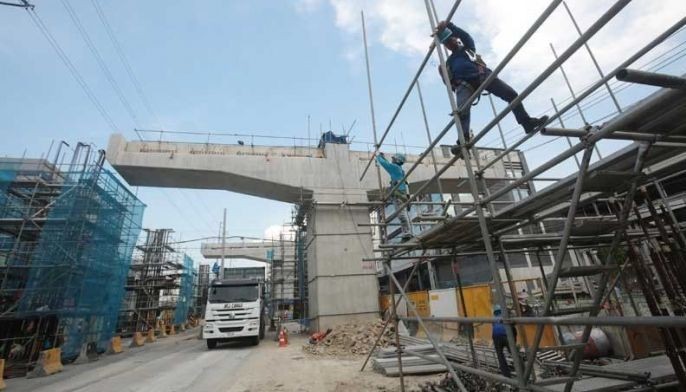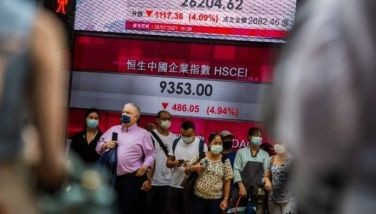Moody’s: Philippines’ fiscal stability intact despite above-target deficit

MANILA, Philippines — The Philippines’ fiscal stability remains intact despite posting a wider-than-expected budget gap in 2018, Moody’s Investors Service said, as increased revenue and expenditures benefit from reforms.
Data released by the Bureau of the Treasury last week showed the fiscal deficit stood at P558.3 billion last year, bigger than the P350.6-billion gap posted in 2017.
The budget gap in 2018 was equivalent to 3.2 percent of the country’s gross domestic product, breaching the P523.7 billion (3 percent of GDP) ceiling for the entire year.
In a commentary sent to reporters on Wednesday, Moody’s said the overshoot of 2018 budget deficit target “masks underlying fiscal stability,” adding that the country’s debt affordability is expected to improve on the back of stabilizing market interest rates and stronger revenue collections.
“Although wider budget shortfalls typically reflect a credit-negative deterioration in other fiscal metrics, measures of the Philippine government's indebtedness and debt affordability have remained stable or continued to improve,” Moody’s senior credit officer Christian de Guzman said.
“The fiscal deficit did not widen so much that it increased government debt, which declined to 41.9 percent of GDP in 2018 from 42.1 percent in 2017,” he added. “The debt-to-GDP ratio also remained stable, despite the Philippine peso's 5.0 percent depreciation against the US dollar in 2018.”
A deficit means the government spent more than it earned, while a surplus means the opposite.
Revenue collection up due to TRAIN
Revenue collection in 2018 hit P2.850 trillion — higher than the P2.84 trillion programmed for the year and up 15 percent from P2.47 trillion generated in 2017 — thanks to the implementation of Tax Reform for Acceleration and Inclusion law which was projected to add P63.3 billion to state coffers in its first year.
Under the TRAIN law, personal income tax rates are adjusted to remove the burden off lower-income segments while raising levies for fuel, cars, tobacco, coal, minerals and documentary stamps, among others. The law also removed some exemptions to value-added tax and slapped new taxes for sugar-sweetened drinks and cosmetic procedures.
Meanwhile, government spending spiked 21 percent year-on-year to P3.40 trillion in 2018, exceeding the P3.37 trillion target for the year “as a result of ramped-up spending in public infrastructure, social protection and higher personnel services due to a pay hike for both the civilian, and military and uniformed personnel.”
According to Moody’s De Guzman, continued increased in revenue generation is expected this year after the TRAIN law codified gradual increases in excise tax rates that took effect at the beginning of 2019.
Despite the “demonstrated effectiveness” of spending reforms, De Guzman said the government may be challenged to fully execute the programmed spending budget of 19.3 percent of GDP for this year, partly because of a one-month delay in the passage of the budget law and public works ban ahead of May 2019 elections.
“Although the government operated on a re-enacted 2018 budget in the interim, spending on new appropriations was prohibited while the budget law passage was delayed,” the debt watcher said.
“Moreover, electoral rules prohibit disbursements related to public works, hiring or moving government workers in the 45-day period ahead of mid-May mid-term elections,” it added.
The Duterte government has been pushing for a wider budget gap to accommodate heightened infrastructure spending, particularly big-ticket projects in its “Build, Build, Build” program. For 2019, the state has set a wider deficit ceiling at P624.4 billion (3.2 percent of GDP).
In the same commentary, Moody’s said it expects the fiscal deficit to slightly narrow this year “in light of the government's outlooks for revenue and expenditure.”
Moody’s affirmed the Philippines’ long-term local currency and foreign currency issuer and senior unsecured debt ratings at “Baa2”—a notch above minimum investment grade—and maintained the outlook at stable.
This matches the ratings earlier given by the other two of the so-called “big three” debt watchers, Fitch Ratings and S&P Global Ratings. A higher rating can lower the cost of borrowing in foreign currencies and can increase the country’s ability to attract foreign investment.
- Latest
- Trending































